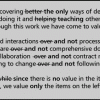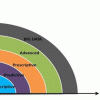Strategic advice to leverage new technologies
Technology is at the heart of nearly every enterprise, enabling new business models and strategies, and serving as the catalyst to industry convergence. Leveraging the right technology can improve business outcomes, providing intelligence and insights that help you make more informed and accurate decisions. From finding patterns in data through data science, to curating relevant insights with data analytics, to the predictive abilities and innumerable applications of AI, to solving challenging business problems with ML, NLP, and knowledge graphs, technology has brought decision-making to a more intelligent level. Keep pace with the technology trends, opportunities, applications, and real-world use cases that will move your organization closer to its transformation and business goals.
Recently Published
Thanks to some initial findings from a recent Cutter survey, we now have a better understanding of the extent that organizations are actually implementing (or planning to implement) enterprise app stores.
Using Noninvasive Measurement to Link Agile and CMMI
Many still perceive agile development methods and CMMI best practices as opposite ends of a continuum. These misconceptions originate, in part, from a lack of accurate information. This Executive Update proposes noninvasive measurement as a technique to collect data about the agile software development process.
When Things Don't Fit
Coherence is a highly desirable characteristic of every human enterprise. Everything should "hang together" and be "true as a whole," to quote common dictionary phrases. Yet one of the most frustrating and disturbing aspects of working life is that everything doesn't hang together and isn't true as a whole. Most things only "sort of" fit -- if they fit at all. Gaps and inconsistencies abound. Assumptions must constantly be made. Confidence is hard to muster.
The Velocity Component
The realm of Big Data is described by volume, velocity, and variety. Volume and variety have frequently been discussed, centering upon support for Hadoop and MapReduce. Volume, of course, refers to the sheer size of data sets, and variety is mainly about the increasing need to analyze unstructured data.
"With world Internet usage quintupling per decade, there is no upper limit on the number and value of new business opportunities for those who can bend the swelling flood of data to their purposes."
-- Ralph Hughes, Guest Editor
Big Data has the potential to transform the way organizations do business and how we run society. From the ability to harvest vast forests on a just-in-time, lean manufacturing basis to the efforts by the UN's Global Pulse Unit to harness up to 2.5 quintillion1 bytes of Big Data to help enhance public policy making,2 it seems that Big Data and Big Data analytics (BDA) really can be the solution to many problems.













